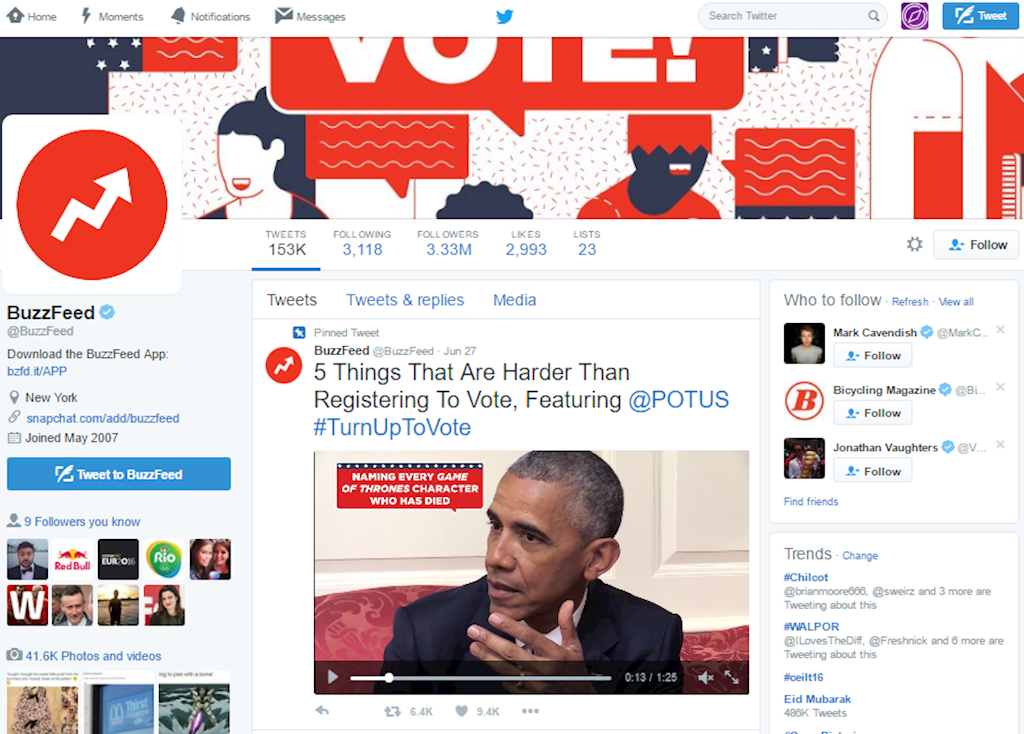In the midst of the information age, it’s little wonder that our brains struggle to process the sheer amount of data thrown at it on a daily basis.
Nearly 5,000 images per second are shared across Facebook, Instagram and Tumblr daily. Apu Gupta, CEO and co-founder of Curalate, a marketing platform for the visual web says that ‘it’s clear that a shift is afoot – a desire to share what matters most in pictures rather than words’.
This article will examine the power imagery has in marketing and demonstrate how you can use visual components as part of a successful strategy.
Read on to find out:
- The effectiveness of visuals and what opportunities they can present
- How you can utilize imagery to maximize social media engagement
- Why moving imagery and videos offer the best ROI
Consumers prefer visuals:
Information is easier to digest when it is accompanied by some form of visual stimulation. Tony Haile, CEO of Chartbeat works with real-time data to better understand readers of publications and inform marketers. His research has determined that the average reader will only give a piece of textual content 15 seconds of their time before potentially bouncing off.
However, eye-tracking studies show that internet readers pay closer attention to information-carrying images; these studies have revealed that when images are relevant, readers spend more time looking at them than they do reading text on the page.
With that in mind, Infographics have proven to be an effective way for marketers to deliver bitesize information in an engaging fashion.
Visuals improve social media engagement
According to data scientist Douglas Mason, adding visuals to posts on Twitter boosted their retweet rate by an average of 35% while adding videos provided a 28% lift.

Likewise, research by fastcompany.com shows that photos posted on Facebook get 39% more interaction than regular posts. Their statistics indicate that photos account for 93% of the most engaging posts on Facebook with 53% more likes, 104% more comments and perhaps most importantly, 84% more click-throughs on links and landing pages than their text-based counterparts deliver.
Social media is a fast paced information environment and marketers often need to be able to react in real-time to take advantage of news hooks. Having to rely on an outsourced designer, or even an in-house design team, can stifle the potential of marketers looking to harness images within their reactive online campaigns. Online design tools like Canva give marketers with little design experience the ability to build on brand imagery. Canva offers a service for businesses and brands in which the user can create brand kit identities, which load ready to be edited with prefixed colors, fonts and rules. With relative ease, users can then use the interface to drag, drop and layer images and words.
A freemium tool with the ability to upgrade designs with purchased elements and imagery, Canva offers a cost effective solution to marketers that don’t have professional graphic creation within their skill set armory.

Video offers the best return on investment
Research by Adobe suggests that video offers the best ROI for engaging with customers and clients. They found that shoppers who view video are 1.81 times more likely to make a purchase; 51.9% of marketing professionals worldwide cite video as content that delivers the highest ROI; and retailers have identified a 40% increase in purchases as a result of video.

Marketers are taking note of this trend, so much so that Cisco predicts that it will take over 5,000,000 years to watch every video that crosses global IP networks in a single month in 2019.
By its very nature, video adds another dimension to flat, text-based content. The reporting and analytics potential of video is also rich for marketers. Marketers can track when play buttons are clicked, how often a piece of content was viewed, which segments were skipped and perhaps even which seconds or minutes were re-watched. This data gives marketing teams a very powerful insight into the effectiveness of their content.
It’s important however to have a clear goal in mind before a video is planned or filmed. Marketers should determine whether a video is being produced in order to entertain, inform or convert which will then allow them to establish their key metrics for success. Metrics can vary from the definite, for example ‘did sales come as a direct result of the link within the video?’ to the qualitative review ‘have we positively enhanced brand sentiment?’ and ‘are our viewers excited by this announcement’? These metrics can be evaluated by examining likes, comments and shares of the content.
Providing visual stimulation is a fantastic way to pique interest and engage readers. The way people, particularly the younger generation, are consuming content is changing profoundly. Your customers are being delivered content more frequently than ever and in order to remain relevant, consider adapting your content marketing strategy and harnessing the potential of photos, infographics, videos and visual content to fit marketing trends as they develop.
Access the latest business knowledge in Marketing
Get Access






Comments
Join the conversation...